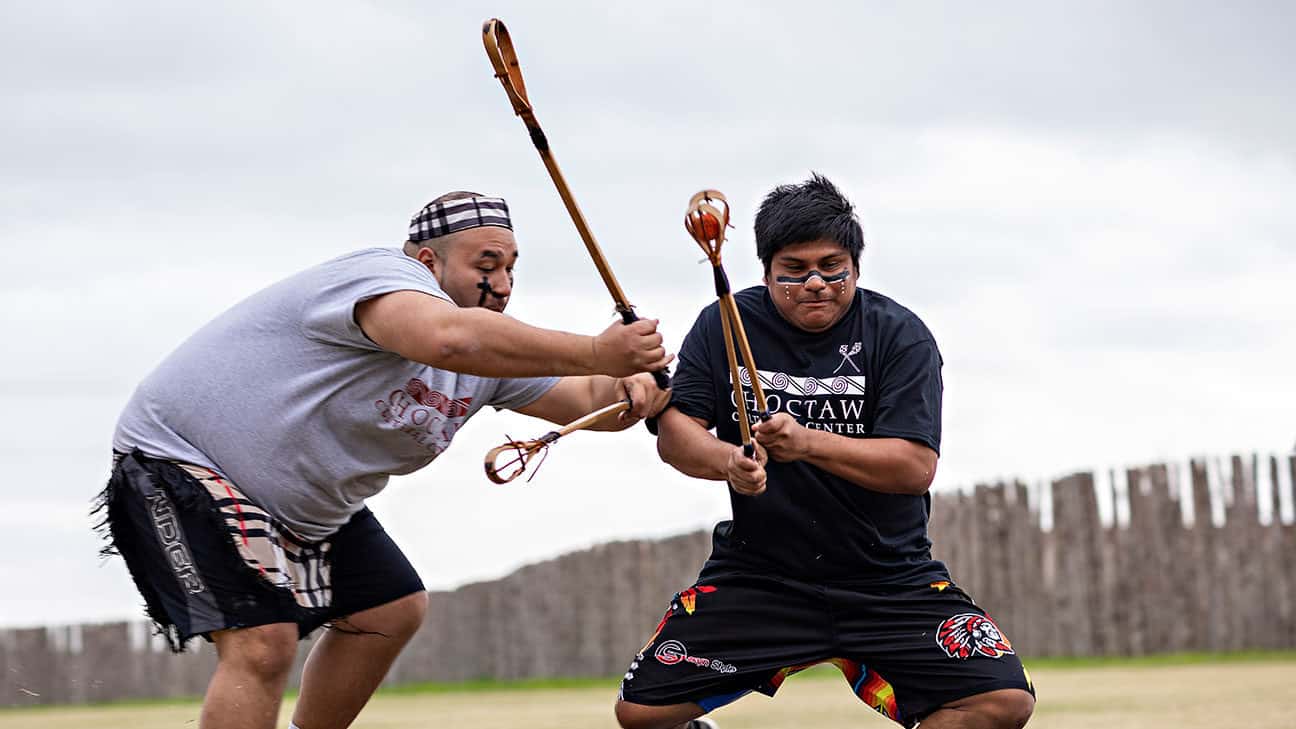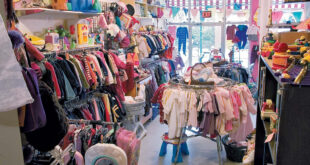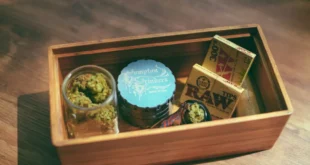Stickball was an ancient means of settling disputes, developing warrior skills and building communities together. While its modern expression may differ in lacrosse today, its rich cultural roots continue to thrive today.
Choctaw craftsmen remain busy crafting stickball sticks called kabocca and towa from hickory wood, woven together with leather or deer hide thongs, for use in this sport’s revival.
Stickball has long been an integral part of Native North American culture, used as a nonviolent way to resolve disputes through tribal elder-organized games. Tackles and wrestling would often occur, leading to broken bones being considered badges of courage by players.
Even though this tradition was nearly extinguished, efforts are underway to revive it and pass it along to future generations. As part of United States Native American Heritage Month, Google Doodle today features Indigenous North American stickball – one of the oldest team sports ever played and once used to settle disputes without resorting to violence.
Origins
Stickball was an invaluable social tool for Native North Americans. It served as a mediator during village conflicts, settlement disputes between tribes and unifying communities, while keeping warriors in fighting conditions while honing defensive skills. Stickball competitions often resulted in broken bones – an emblem of courage considered an honourable sign. Chickasaw Ishtaboli still uses stickball today to enhance culture and foster community spirit.
Stickball was first recorded as an early 1700s tribal practice. Elders would organize these stickball games to solve conflicts, bring people together and demonstrate courage and skill – some games lasted days with hundreds of players participating and included tackling and wrestling as permitted methods of play – leading to injuries commonly.
Stickball was an immensely popular pastime among numerous Southeastern Woodland tribes such as Cherokee, Choctaw, Creek and Seminole peoples, such as Cherokee. They called the game Anetsa or A-ne-jo-di and used it as a precursor for war training – featuring rough play that sometimes led to players being scratched with a bone set with feathers until the blood had come pouring from their wounds – drawing large crowds including white spectators to witness major games as major events!
Lacrosse
evolved into its modern form over time. Nowadays, players use an 80-100 yard field equipped with goals at both ends with poles lining it to play two teams with equal numbers of players each using wooden sticks fitted with gripping grips for gripping purposes and tightly wadded deerskin balls that feature tightly wadded deerskin balls as their weapon of choice – while players decorate their sticks using hair from various animals for enhanced speed and agility.
Google Doodle’s November Native American Heritage Month Doodle features indigenous stickball, which has long been played and holds great cultural importance among Native American tribes such as Choctaws, Cherokees and others in Oklahoma, Texas and North Carolina. It reminds viewers to celebrate all that Native American Heritage Month offers them.
Stickball was a way of life in many tribes, closely linked with their spirituality and identity. Each tribe had their own rules and equipment for playing this sport socially – games typically lasted long with numerous teams participating at any one time.
Early 20th-century stickball became increasingly obsolete as new values took root, leading to its gradual decline. Lacrosse emerged as its successor, yet its influence can still be felt today among current players.
Stickball’s
recent revival has kept Choctaw craftsmen busy; each stick known as kabocca and towa must be handcrafted from materials like hardwood. Kaboccas have thinned-out ends designed to hold balls while towers are constructed using tightly wadded cloth woven with strips of leather woven tightly throughout their structure.
The history of this game dates back at least to 1100 A.D. It became a favourite pastime among both men and women of both genders, and its rules were dictated by tradition; its social aspect played an essential role. Playing this game also showed courage and skill – the Cherokee called it itti kapochcha toli (little brother of war)! Through time it has served as a less dangerous alternative to war.
Today there are still multiple forms of playing stickball across tribes. While rules differ depending on which tribe one belongs to, most typically use sticks with rounded ends to hurl a ball towards teammates. Before each match begins, rituals like smudging or burning tobacco are performed to purify the mind and body before competition commences. Assimilation into Western culture contributed to its decline during the 19th century due to sending native children away to boarding schools where traditional practices were discouraged while transference of knowledge between generations became impaired; territorial confinement made it harder for teams too far apart from competing.
Art on the Atlanta Beltline recently hosted an exhibition stickball match featuring players from Chickasaw, Choctaw, and Cherokee nations – as well as Emory University to educate audiences about its history.
Southeast Woodlands
communities referred to stickball as “iitti kapochcha toli,” or the “little brother of war,” which required both strength and agility. Playing itti kapochcha toli involved using a two-and-a-half foot stick and soft deerskin ball; hitting chest-height marks on poles was worth one point; the top half above arms’ reach (often decorated with fish or other sacred animal figurines) two points; while hitting any mark near arms’ reach was worth three points!
Indigenous North American stickball has seen a revival over recent years, with numerous organizations hosting regular matches and tournaments for this sport. Some even plan on developing a world championship tournament! Stickball’s revival serves as an indicator that Indigenous communities are rediscovering their heritage and keeping traditions alive for future generations.
Rules
Google is proud to recognize Native American Heritage Month by creating its iconic logo with indigenous stickball as an example of one of North America’s oldest team sports, often likened to lacrosse due to its multiple roles and player types.
The goal of Kabocha is to strike a small ball with a curved stick while running it between poles at either end of the field for points. It consists of leather wrapped around a stone and painted bright orange; contact is strictly limited and only ball carriers can be tagged out. Each player carries two handcrafted sticks called Kabocca similar to mini-lacrosse sticks made from smooth hickory.
Physical training aside, the game also serves to teach leadership and cooperation. Within Choctaw culture, it was known as Itti’ kapochcha to’li (little brother of war) to settle disputes between tribes without resorting to war itself. Furthermore, playing this game honours warrior spirits while also symbolizing honour, pride and bravery.
Though stickball remains significant today, its importance has diminished significantly as other athletic pursuits became more favoured on reservations. World Wars and other 20th-century conflicts depleted Native American populations further diminishing interest in stickball among younger generations; some tribes have even discontinued the tradition entirely.
Indigenous communities
across North America have been working hard to revive Indigenous Stickball despite its decline, and one tribe, the Eastern Band of Cherokee, can be seen playing stickball while exploring their identity as Native Americans in She Carries On. Welch believes visibility issues hinder revival efforts for stickball; she hopes that events such as this weekend’s Indigenous Stickball Tournament and Summit in Atlanta can raise awareness about this sport and its historic importance.
Stickball rules vary between tribes but generally follow a similar game system. The goal of stickball is to hit the ball into the opposing team’s goal using a long stick with a curved end armed with soft deerskin balls; goal posts are placed at either end of the field; players may only use their sticks, not their hands to touch or move the ball during gameplay; two teams consisting of up to five players on either team each possesses a long stick equipped with soft deerskin balls for this activity; while excitement reigns supreme during gameplay!
Stickbal
has long held social significance among Native communities and remains integral to their heritage today. Used for settling disputes among tribes and often known as “the little brother of war”, stickball was also used as a way for young men to develop leadership skills while also serving as an avenue to spirituality and maintaining cultural connections, according to Ketchum.
Modern stickball tournaments are being hosted across North America to connect Natives with their culture and tradition while providing a fun competitive event that brings families closer together.
Stickball, as we know it today, is a hybrid of three Indigenous stickball styles. Originating in Southeast, Great Lakes and Northeast regions of America, historically teams could be comprised of up to 1,000 players competing on goals that could span over one mile away with sticks featuring either circular hoops, egg baskets or an oblong style that most closely resembles lacrosse shaped sticks shaped similarly.
Stickball
is an exciting physical sport requiring skill and accuracy, traditionally played on natural fields without padded equipment. Players would traditionally wear buckskin only and use two Kapucha sticks made from tree trunks/saplings with flared cups at each end with leather lacing inside to hold the ball; two goal posts called Fabvssa were placed at either end of the field; points could be scored by hitting either goal post with their ball to score points.
To protect players, medicine men would perform various rituals before any game started. They included giving players special scratches said to aid their performance during gameplay as well as blessing each stick and offering special prayers to guarantee its success.
Players were out if they touched the ball with their hands or kicked it out of bounds, while other rules included no stealing bases and three strikes per inning. All participants in the game wore white headbands as part of their identification as participants in this particular sport.
Native American Stickball games are now part of cultural festivals and competitions, giving attendees a chance to cheer on athletes while tasting traditional foods, enjoying music and dance performances, as well as learning more about this ancient game’s deep cultural significance. While its appearance differs greatly from that of modern lacrosse matches played at high school, college, or professional levels today, its continued existence stands testament to its continuing relevance for Native Americans today.
Equipment
Stickball is an ancient indigenous tribal sport with deep ties to culture. However, its intensity makes it an exciting and fast-paced game that provides great ways to build community and foster cooperation, as well as learn more about various tribes’ cultural practices and learn their rules and equipment differences. While each game might differ between tribes in terms of rules and equipment needs – the goal remains unifying regardless.
Stickball was traditionally played for sportsmanship, spiritual healing, mental health benefits and conflict resolution purposes. Today it can be seen in sports like lacrosse and hockey; Southeast Woodland nations such as Cherokee, Choctaw and Chickasaw play stickball in unique styles that were highly competitive over several days-long tournaments.
Traditional football was played on natural fields with teams of up to 100 players wearing no padding clothing, playing without pads. Each player carried a ball made from deerskin or other material and two Kapucha sticks made from hardwoods like hickory that had flared ends fitted with leather lacing to hold onto the ball firmly and two goalposts at each end of the field called Fabvssa – also called goalposts – was also important.
Ketchum
notes that indigenous peoples found this game vital for strengthening cultural ties and encouraging cooperation, learning new skills, demonstrating tribal leadership and showing tribal spirit. It became such an integral part of tribal festivals and ceremonial events that it became part of their lives forever.
Today, people still play stickball as a means to honour their indigenous heritage and connect to family and culture. This renewed interest keeps Choctaw artisans busy crafting handmade sticks: the kabocca (made of hickory) is bent at both ends to form cups into which players hold the ball; towa are constructed using cloth tightly wrapped around a stone or piece of wood and bound by leather thongs or deer hide the cord.
Stickball was an ancient game requiring speed, strength and endurance. Not only was it used for sports entertainment purposes; but it was also an effective means of settling disputes, practising warrior skills and uniting communities. Stickball became an integral part of Native American culture – something it continues to play an important role today.
Modern stickball has experienced a revival thanks to dedicated practitioners like Eli J. Hickman of DFW Kabutcha Toli. Hickman established this stickball club for local Native Americans who had played since childhood; Hickman himself hails from a Choctaw and Cherokee background and created DFW Kabutcha Toli to share this pastime and preserve his community’s heritage.
Historically
, stickball was played on natural fields with teams of equal size using no padding on their clothing. Players held two Kapucha (stickball sticks) made from hardwood such as hickory; at either end was thinned for better ball control with an opening at one end for holding. A flared cup would then be inserted to keep track of ball play.
Myles features three styles of sticks in her Doodle: circular hoops from Great Lakes tradition; egg-like baskets used by Southeastern tribes who typically used only two sticks; and the oblong style created by Indigenous people from the Northeast who most closely resemble what lacrosse sticks look like today.
Today’s Google Doodle by artist Marlena Myles depicts three variations of stickball from across North America. She shows the circular hoop typical of Great Lakes traditions, the egg-shaped basket typical of Southeastern traditions, and an oblong style used by Northeastern tribes. Myles’s Doodle also displays the ceremonial pregame practice of smudging which serves to purify players’ minds and bodies before every match and remind players that even their competitors possess spirits which should be honoured and revered.
Variations
Stickball was once an Indigenous game that nearly went extinct, yet its revival today serves as a testament to Native culture’s resilience. Today, tribal members are rediscovering their traditions while passing them along to new generations.
Numerous Indigenous tribes around the world played stickball, sharing some general characteristics. This included using handcrafted sticks to transport a ball between two stakes without touching it with hands; other tribes like Cherokee and Chickasaw held massive games that lasted days – these events provided major social benefits that brought communities together; those considered adept players were highly respected by their peers.
Men and women may play separate versions of the same sport together; such co-ed competitions were socially acceptable ways for unmarried young men and women to interact, with modified rules allowing female participants to pick up the ball using both hands instead of only their feet, which had been considered an offence in men-only matches.
Stickball also included spiritual beliefs; it served as a means of inculcating children lessons about family and community values while strengthening ties among different tribes; in one incident between Chickasaws and Choctaws, it led to a brawl involving 300 individuals!
Stickball was so widely enjoyed in its day that it inspired other sports like lacrosse to become popular field games today. A revival in interest for stickball has kept numerous Choctaw craftsmen busy as each kabocca and towa that players use must be handcrafted individually – the former is composed of wooden sticks that have been carefully carved and bent while towa is comprised of fabric tightly wound around deer hide or leather thongs.
Traditions
Tribal elders traditionally used stickball to avoid physical conflict between tribe members. Gameplay was typically accompanied by all-night dancing and singing performances and often included rituals, such as fasting before each matchup. Players wore no padding clothing and carried Kapucha sticks made from hardwoods such as hickory with flared ends that could hold balls.
Stickball was not only an entertainment activity but also a chance for young men to demonstrate their courage and skills. Women played their part too by providing food for players and spectators as well as singing during games and awarding prizes to teams with exceptional members.
Stickball was an engaging social event that brought communities together through long games that sometimes lasted days. Teams could have up to 100 players who followed strict rules of conduct while medicine men played an essential part by blessing players and their sticks before playing.
The sport was not as widely practised before; however, it remains an integral component of Indigenous culture and has experienced a revival outside its traditional communities. Events such as the World Series of Stickball provide an excellent showcase of this tradition-rich sport and its culture.
Google recently used an illustration of Stickball to honour November as Native American Heritage Month – which was initially designated by President George H.W. Bush. Native American Heritage Month began under President George H.W. Bush in 1990 and was reiterated by President Joe Biden this past Monday. Its purpose is to foster and preserve indigenous cultures and traditions while offering non-Native Americans a chance to learn about North America’s indigenous peoples and learn more about their histories.
Social Impact
Stickball was an integral part of indigenous North American life, with tribal elders selecting locations for games to settle disputes and bring communities together. Stickball matches could last days with hundreds of players and spectators participating. Rules were frequently lax, permitting tackling, wrestling, and tripping – often leading to broken bones being sustained during these tournaments – with deep spiritual connections tied into cultural identity being an additional benefit of participating.
Though each tribe had its own rules and name for the game, there were many similarities among forms. The earliest documented version involved land animals using brute force against birds; using speed and skill instead to overcome challenges presented. This encounter illustrated how integral indigenous games are.
Stickball was an indigenous North American team sport played without padding and using “captcha,” wooden “sticks” with leather lacing on them to hold the ball. Goal posts known as Fabvssa were located at each end of the field for goalpost play.
Stickball was an indigenous game with few rules; according to anthropologist James Mooney, an anthropology professor. James described its violent nature and social impact as well as its training experience for war; tribal warriors often participated in pregame rituals wherein they would be scratched with bone covered with feathers until their wounds bled from 100 different points on their bodies.
Stickball’s popularity with Native Americans diminished over time as Western culture forced their assimilation into it and more modern sports became popular on reservations such as basketball, baseball and football – rendering stickball an outdated pursuit. Furthermore, tribal members lost to 20th-century wars reduced the number of players further.
Challenges
Stickball, an Indigenous American sport, plays an integral part in Native American culture. Similar to lacrosse, it fosters social interactions among tribes while simultaneously protecting cultural traditions; however, unlike modern lacrosse, stickball was used to mediate disputes among them and prevent intertribal war.
Stickball has seen a revival across tribal communities across the US in recent years. Youth programs, public events and competitive leagues are helping revive its history; while these efforts are promising, revitalization efforts may present unique challenges.
One of the primary obstacles to the survival of stickball is the lack of resources and support. Many indigenous communities do not have access to the necessary equipment and training needed for play; moreover, finding time and money for organizing and promoting matches remains challenging for these communities. Yet stickball remains part of Native American culture today despite these difficulties and will likely remain part of Native American heritage for generations to come.
Google is commemorating the history of Indigenous North American Stickball by featuring an art design on its homepage. The logo was created by Saint Paul-based Native American artist Marlena Myles after she spent time researching movies and interviews about it to gain a deeper understanding before sketching her design. Google will display Myles’ artwork from November 1-30 as part of Native American Heritage Month; Northeastern State University held a demonstration as part of its American Indian Heritage Month festivities during that same week.
Note:
Are you a content creator? If yes then we welcome bloggers & they can submit a guest post to our famous blog for free, just search in google, we are on top of search engine “ write for us + home”, You will find “Lifeyet News”.
 Lifeyet News Lifeyet News
Lifeyet News Lifeyet News





